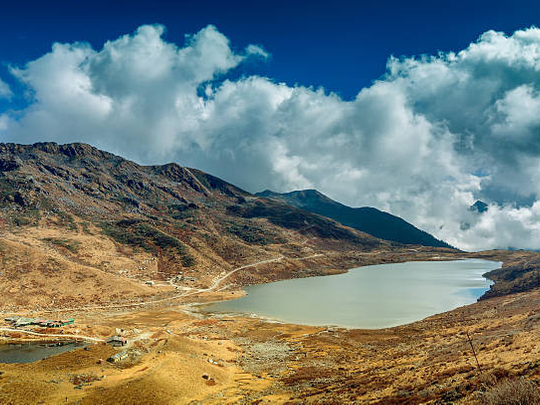
I had always told myself that, one day, I would explore my own country instead of seeking distant shores. Once I returned home for good, the opportunity presented itself almost on a platter. I was asked to join a group touring a few states which were not on everyone’s wish list. The places that normally come to mind are the beach paradise of Goa, the best backwaters experience that Kerala has to offer or the magnificent forts and palaces of Rajasthan.
We trained our sights on the undulating hills and bracing climate of the northeast. The state that impressed us the most was clean and green Sikkim. It became a state in 1975. Known as the little brother to the seven sister states in the northeast, it is home to the world’s third highest peak, the Kanchenjunga. We were put up in a hotel appropriately named Himalayan Heights. All our rooms had a superb view of the awe-inspiring mountains, truly a sight for sore eyes. As we drove into the state in lashing rain over winding roads, we were treated to our driver’s description of what lay ahead of us. Pride in his beautiful home shone through his narrative.
We talked to a lot of locals during our stay and it was obvious that they were a happy lot. What was even more admirable was their faith in their chief minister who has completed almost 25 years in power. His long reign has not disillusioned his people and they hope he continues in power and does not decide to take up a gubernatorial post any time soon. He has declared the state a completely organic state and, sure enough, we passed by many stalls selling organic foods. The driver proudly drew our attention to these during our long drives.
But what struck us most was how clean the state was. No trash on the roads or the ubiquitous plastic bottles strewn everywhere. We never saw anyone spitting on the road either, a welcome change from what we experience everywhere else. Neither did we see a single road rage incident. The people are warm and friendly and this, coupled with the natural scenic beauty, made us feel a sense of loss when it was time to leave.
We drove to Tshangu Lake, also known as Tsomgo, situated at an altitude of 12,300 feet, dressed in layers of woollens as we had been warned that it would be freezing there. The glacial lake remains frozen in winter and is held in great reverence by the Sikkimese. By the time we reached the lake after a long drive, it was snowing. But this was yet another delight to be savoured by those of us who had come from the warm south. There was a line of colourfully decorated yaks waiting to take you for a ride, literally speaking. We made our way carefully through the snow to catch a glimpse of the lake but the fog had set in. We waited patiently for it to lift and were rewarded, for a brief moment, with a clear view of the lake.
The tea drinkers among us had their first taste of yak milk, with varying reactions ranging from yuck to yum.
Other memorable experiences included visits to Buddha Park, which features a 130-foot high statue of Buddha consecrated by the Dalai Lama in 2013; monasteries and the first capital of Sikkim, Yuksom. The first Chogyal (ruling dynasty in the state), was crowned here, where he established the first monastery in Sikkim. Prayer flags are strung up near the coronation throne and an ancient pine tree looms over this site.
This is one place that will linger in my mind as it exceeded all our expectations and then some.
Vanaja Rao is a freelance writer based in Hyderabad, India.










